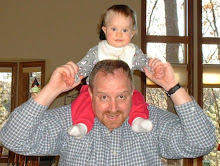To get back to the topic at hand, the day after Christmas was supposed to be very windy and the conditions weren't too good either. I decided to change to go fly on Christmas day instead. When I got out to the airport, it had settled down to about 140@7kts. Not too bad. I needed to start flying N737TY because it will probably be the plane I take my check ride in because the other 172 (N733NB) goes offline 1/5/09 to get painted. I decided to just get familiar with the airplane again and do some touch and goes. It was good to just get back to flying but I am starting to feel an urgency to get my training over. I did a grand total of 5 touch and goes before I called it quits. I was not real happy with my performance but did manage to land safely every time and the airplane was flyable after I finished. After I landed the last time, I heard the controller say that the winds were now 140@14 gusting to 18. I'm glad I decided to stop. I needed a confidence booster, not a demonstration of my crosswind techniques.
Move foreward 3 days to Sunday the 28th. After a couple of days of horrible winds, I decided that the forecast for Sunday looked great. Saturday had some of the worst crosswinds I have ever seen at McKinney. Our runway is oriented at 17/35 or 170 and 350 degrees. A direct crosswind would be 280 and 100 degrees. The maximum demonstrated crosswind for a Cessna 172 is about 15 kts. Anything above that and you are a test pilot. Saturday afternoon's winds were 270 @32kts (37 mph) sustained with 48 kt (55 mph) gusts. I saw a Gulfstream do a go around because he couldn't handle the crosswind. Then I saw a Cherokee land right behind the Gulfstream that went around. Go figure. Eventually the Gulfstream did make the landing and asked how the Cherokee guy did it. I'd seen enough and left.
Sunday was a thing of beauty. By the time I got out to the airport, it was calm winds and about 57 degrees. What more could I ask for. Unfortunately, I was not going to be able to enjoy the beautiful scenery because I had to go under the hood. I go to look at the lovely scene of the Cessna six pack. We did the usual takeoff and put the hood on and turn to a course of 90 degrees. I climbed up to 3,000 feet and Richard had me intercept the Bonham 190 radial and fly to it. Of course I did as asked but quickly realized that I was flying with a "from" flag instead of a "to" flag. This makes everything backwards. So I dialed in the reciprical (10) and it behaved normally. Then I got tested pretty hard. While under the hood, he asked me to turn to 270, descend to 2200 feet, dial in the GPS 17 A approach, set up the CDI, intercept the 212 radial from the Bonham VORTAC and fly it to McKinney. Not much pressure. I actually did it. When we got to our final approach fix, we let the tower know and headed to it to do a touch and go. Of course, nothing was easy. Richard wanted a soft field landing. It was soft but too fast so we went around for another one. This time it was soft and slow. The damn stall warning horn is still going off in my head 4 hours later. We went around for another lap and this time did a short field landing over an obstruction. I cleared the obstruction easily but my flare was late and scared Richard. He asked me to be kind to the retired and not make their hearts race so fast. I went around one more time and this time it was good. I was getting so good that I had to speed up on the taxi down to the Charlie exit so another plane could land.
All in all, a great day. All of my instrument work is done, my night flying is done, my cross country trips are done and all of "required" work is done. All that is left for now is some prep work for my check ride. I'll be going back over all of the written material again and trying to be prepared for the oral, plus, getting the rust off for the PTS.
My E-Logbook
Today's theme of 2 for one will have to apply to the videos also (actually I have 6 videos, but who's counting?). I had one of our instructors come over this morning and I had to do some work on a PowerPoint presentation for him. He is not just any instructor but my friend Colonel Richard Graham of the USAF (Retired). Col. Graham was a pilot on the SR-71 Blackbird, squadron commander and the 9th Strategic Reconnaissance Wing Commander. This man has flown at over Mach 3 at 80,000 feet over some of the most sensitive areas in the world and has some great tales to tell. It is an honor to know him and he is gracious with his time and endeavors. I wish I could show you the videos he uses in his presentation but since I do not have the rights to them, I won't violate his trust. However, I have found a couple of interesting videos on you tube that I think you will like (except for the annoying background music).
Part 1
Part 2
Part 3
Part 4
Part 5
Part 6
Part 2
Part 3
Part 4
Part 5
Part 6



















